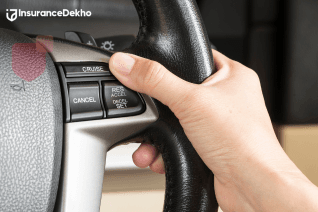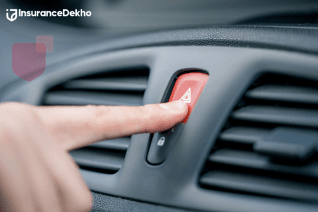How to Get Rid Of Mould In Car During The Monsoon
Are your car seats full of mould in the monsoons? Read this article to know how to get rid of them permanently.
Most of us go to great lengths to keep our cars nice and shiny on the outside, however, the insides of the car also require equal if not more attention, especially in the monsoon season. In the rainy season, the damp humid weather makes it a perfect time for mould to develop inside your car. These are not only unseemly to look at, some moulds may also be dangerous for health. In this article, we will tell you more about how to take care of your car during monsoon to prevent mould from growing.
Why Does Mould Grow in Cars?
This happens most often when the car is left untouched for a long time. The best environment for mould to grow in is damp and dark and that is exactly what the interior of the car provides the fungus in the monsoon season. The black moulds which can grow inside cars are dangerous for health.
How To Identify Mould In Your Car?
Mould is a major health hazard, especially when it occurs in cars which are closed spaces. As the saying goes, prevention is better than cure, it is important to identify mould when it shows up and take the necessary preventative measures to mitigate the issue. Here is how you can identify mould early on.
Visible Mould Growth: Mould in cars often appear as small fuzzy spots on surfaces like seats and floor mats. Its color ranges from white and gray to green and black. If left unattended, mould can spread wide and far, very fast.
Persistent Musty Odor: A distinct, mildewy or musty smell is one of the early signs of mould developing in the car’s interiors. This smell indicates the presence of mould spores within the car’s air which can be hazardous, especially to those prone to terrible allergies.
Increased Moisture: Increased moisture inside the car, such as fogged-up windows or damp floor mats, can create an environment for mould growth. This often occurs in cars that are left unused for extended periods or have poor ventilation.
Health Symptoms: Experiencing persistent coughing, sneezing, itchy eyes, or skin irritation while in the car could be a sign of mould exposure. If these symptoms subside when you exit the vehicle, it’s a strong indication that mould may be present.
How Can You Remove Mould From Your Car?
The following steps will guide you to remove mould from your car:
Step 1: Move your car into a sunny place, open all its doors and windows, allowing it to breathe. This will help get the spores and mould out as well as deodorize your car. Make sure you cover your eyes, mouth and nose and the rest of your body while attempting this.
Step 2: Next you have to scrub the seats of your car to remove the mould and make sure it does not resurface. These are the possible things you could use to do this:
- White Vinegar: Vinegar is known to be able to remove mould entirely from cars and stop it from growing back. To use it in your car make a solution of vinegar 8 parts and water 2 parts and spray it on the mould. Next, use a clean cloth to wipe off the mould. In case the car has a pungent smell from the vinegar car freshener should be able to remove it.
- Non-Iodised Salt: The method for removing mould with salt is similar to that of vinegar. Make a solution of salt and water and spray it onto the affected areas only. Wipe off the remains with a clean cloth.
- Dishwashing Soap: This is often used to clean seats, however, it can also be effective in removing mould from the car. But remember to also use a salt solution at the end to make sure the mould does not come back.
- Baking Soda: Mix some of it with water and scrub it on your seat with a cloth. Baking soda is usually very effective at removing mould.
Step 3: Allow the car's doors and windows to stay open for some more time. This will allow the solution to dry off the seats and your car will be back to being clean and fresh.
Also Read
Benefits of Engine Protection Cover in Car Insurance!
How You Can Handle the Car Insurance Claim Rejections?
Conclusion
To conclude, the mentioned steps should help you remove all the mould from the car and keep it sparkling clean. However, did you know there are other dangers to your car in the monsoon season? The rains bring with it more chances of accidents and tyre or engine damage. To protect your car from such situations make sure you have car insurance. Moreover, add-ons such as the tyre cover and the engine cover could be useful in this scenario as well. Click here for more on car insurance benefits. Click here to read similar articles.














































